
Dangerous diseases of cherries
But even with absolutely correct agricultural technology, there is a danger of losing both the crop and the trees themselves. In the last two decades, two fungal diseases — moniliosis and coccomycosis-have been rampant in the middle zone. They affect not only cherries, but also other stone crops and, like all fungal diseases, cause more damage in rainy years.
Cherry coccomycosis
With coccomycosis, the leaves are covered with small brown spots, then turn yellow and fall off prematurely. A healthy cherry has a very late leaf fall, and, according to folk signs, snow will not fall until the leaves have flown off the cherry. In the case of coccomycosis, premature leaf fall can occur as early as the end of July, and if it is a warm autumn, then after some time the secondary growth of shoots will begin-they have little chance of maturing by winter. Damage is guaranteed. Coccomycosis significantly weakens the tree, and the cherry does not have enough strength for good harvests.
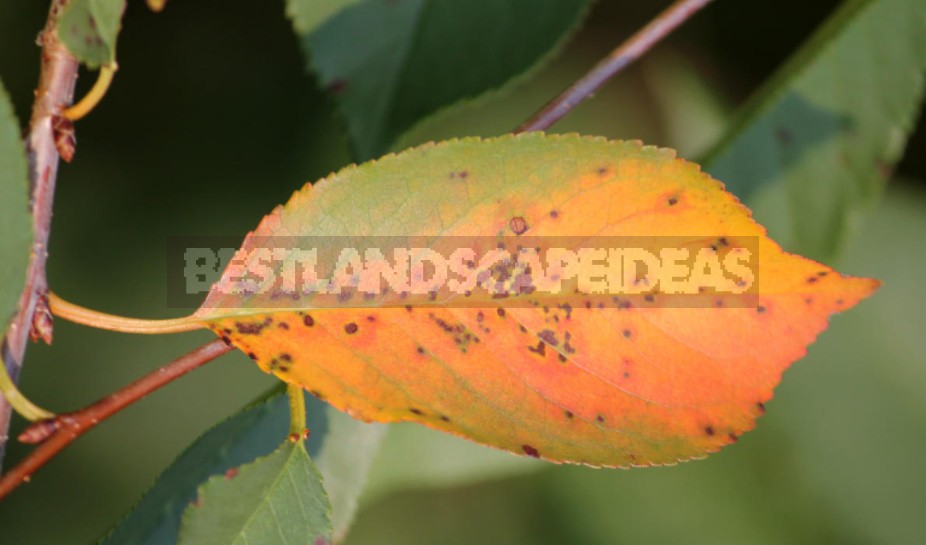
Monilial cherry burn
Moniliosis, also known as a monial burn, can quickly lead to the death of a tree. During flowering, a sharp browning of the flowers and ovaries begins (and even after leaf fall, the dried flowers that persist all winter are clearly visible), the tops of young shoots begin to wither rapidly. In the middle of summer, individual branches can dry up sharply, the foliage becomes a characteristic brown color, and the tree looks as if it was scalded with boiling water.
Bordeaux liquid
Ready-made Bordeaux liquid will help protect cherries from coccomycosis and klasterosporiosis. The preparation is an aqueous suspension concentrate of copper tribasic sulfate. The finished product is very convenient to use: simply dissolve the suspension in water according to the instructions. Earlier, spring spraying of cherries with a 3% solution is carried out in the green cone phase, when leaves begin to appear from the buds. The drug begins to act after two hours and protects the plants for 20 days. The treatment can be repeated after flowering with a 1% solution of the drug.
Bordeaux liquid will protect not only cherries, but also pears, apple trees, plums, cherries, apricots, as well as currants and gooseberries from dangerous fungal diseases.
As soon as you find signs of the disease, cut the damaged branches to healthy tissue, destroy them and immediately treat it with fungicides. The pathogen enters the plant through the pistils of flowers and quickly spreads through the conducting system, and in the absence of control measures, the tree can literally “burn” in one season. It is better not to take risks, but to carry out protective treatments with chemicals that are effective against fungal diseases, starting in early spring.
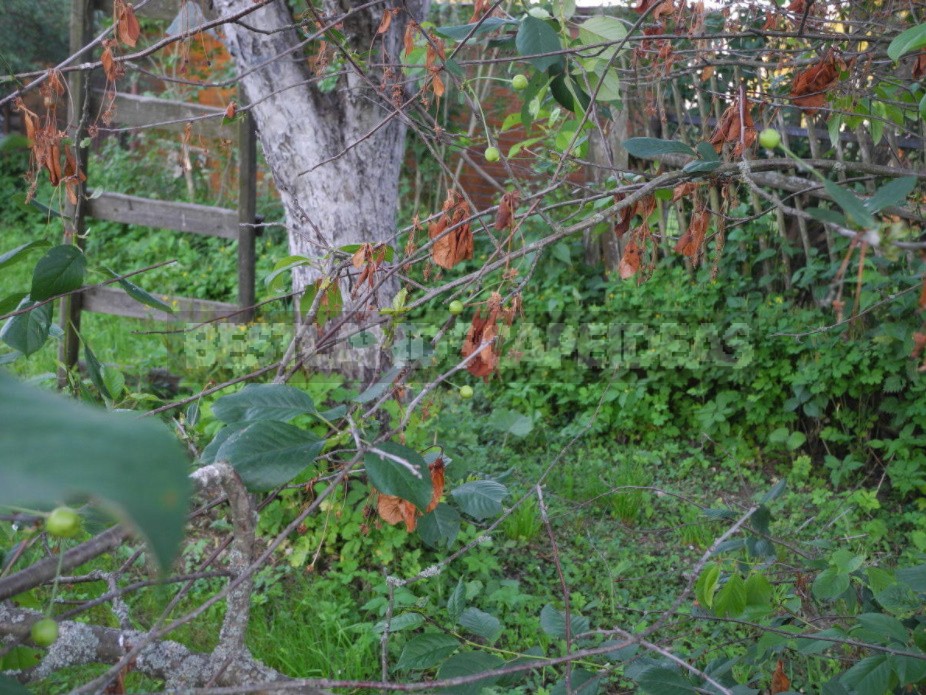
Are there varieties that are resistant to these diseases?
Among modern varieties, you can choose relatively resistant to coccomycosis or moniliosis, but in many cases they can lose to competitors in terms of yield, taste or winter hardiness. These are modern varieties that belong to the tree-like, that is, they will require less care and pruning efforts. Absolutely resistant varieties to both diseases do not yet exist, and in many cases, resistance to diseases, unfortunately, is not combined with high winter hardiness or dessert taste. Creating an “ideal” cherry is a matter of the future.
Cherries, which until recently was considered a southern culture, are successfully moving north. The Latin name of the cherry in literal translation is bird cherry: birds really like to eat its juicy fruits. There are also cherry-cherry hybrids, they are also cherevishni, they are also dukes (after the name of one of the first varieties). These hybrids are also considered more resistant to these fungal diseases.
What is good about Prunus tomentosa
Prunus tomentosa is well known to Siberians and deserves a wider distribution in the European part. This is a shrub with a shiny bark and an enchantingly beautiful flowering. Landscape designers often use it in Japanese gardens as a substitute for cherry blossom, which does not survive in the middle lane. The fruits of Prunus tomentosa are very sweet, and it is a pleasure to collect them: they literally cling to the branches.
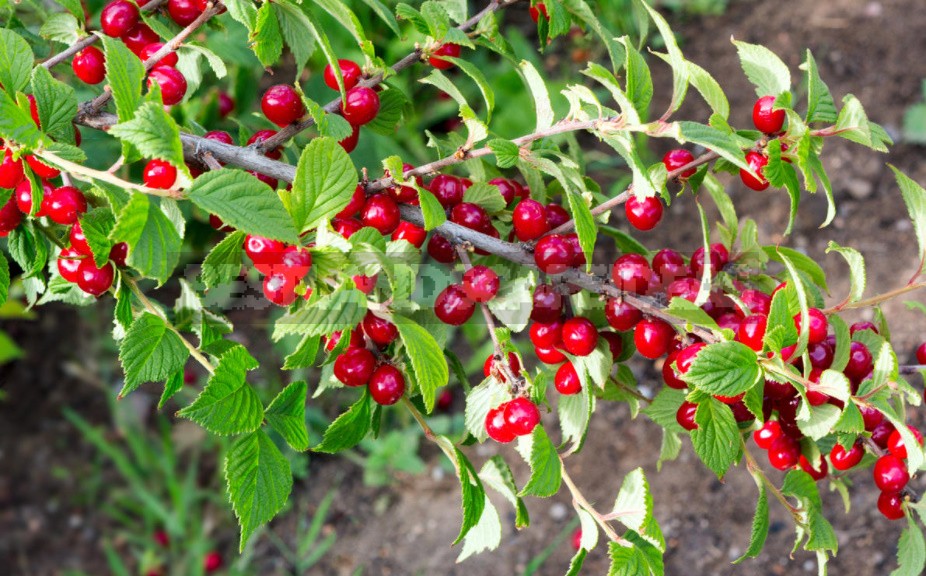
Reproduction of Prunus tomentosa is not difficult. It is enough to sow the seeds immediately after eating, and in the spring there will be shoots. Often, self-seeding can be found under the crown. By the way, children often “settle” Prunus tomentosa in the most unexpected corners of the garden. Propagation by layering or grafting of varieties on seedlings of their own species is also used. Interesting varieties have been bred in Siberia, and species plants are more common in the European part.
Prunus tomentosa, like Prunus cerasus, is affected by moniliosis and, due to its small size, burns up from it before our eyes. But coccomycosis is not terrible for her: a thick pubescence on the leaves protects her from this scourge.

Remember that it is better to prevent any disease than to treat it, so include preventive treatment of stone fruits from moniliosis and coccomycosis in the schedule of garden work. Early spring is the most suitable time for the first spraying.
Prunus tomentosa has a high self-fertility, but for successful fruiting, cross-pollination is necessary, and it is desirable that there are at least two specimens in the garden. Unfortunately, different types of cherries do not pollinate each other. Like Prunus cerasus, this species is very short-lived, besides, it is drought-resistant and quite unpretentious, although it prefers warm places and light soils.

The only drawback of Prunus tomentosa is insufficient winter hardiness (with high frost resistance). She is used to Siberian frosts, does not like frequent thaws and suffers from warming of the bark.
How to prune Prunus tomentosa
Prunus tomentosa branches are durable, so in most cases, sanitary pruning is sufficient for young plants. We remove all damaged, infected, thickening and aged shoots. If necessary, we correct the shape of the bush: by nature, Prunus tomentosa tends to the shape of a wine glass, and its exceptionally abundant and decorative flowering makes it a seasonal accent in the garden.
You can form it in the form of a small tree on a low stem, in this case, you will need a support for life. The main type of pruning is thinning. Periodically, the crown should be rejuvenated: the plant itself tells when and where to cut, forming strong young shoots at the base of large branches.
And what kind of cherries grow in your garden? What problems do you have to face during the year?
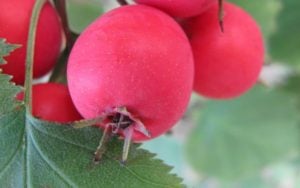

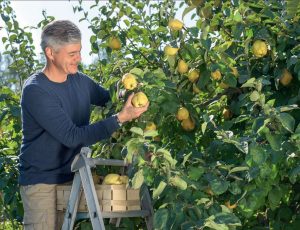

Leave a Reply